Ocean Surgeonfish, Acanthurus tractus
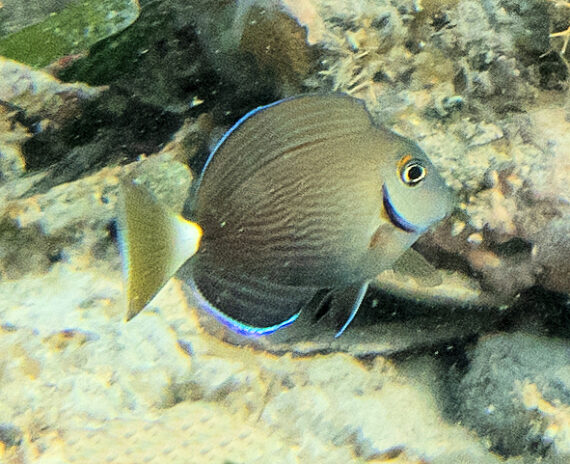 Ocean Surgeonfish, Acanthurus tractus, Juvenile. Underwater photograph taken with coastal waters off Cozumel Island, Quintana Roo, March 2021. Photograph and identification courtesy of Marina Sutormina, Stockholm, Sweden.
Ocean Surgeonfish, Acanthurus tractus, Juvenile. Underwater photograph taken with coastal waters off Cozumel Island, Quintana Roo, March 2021. Photograph and identification courtesy of Marina Sutormina, Stockholm, Sweden.
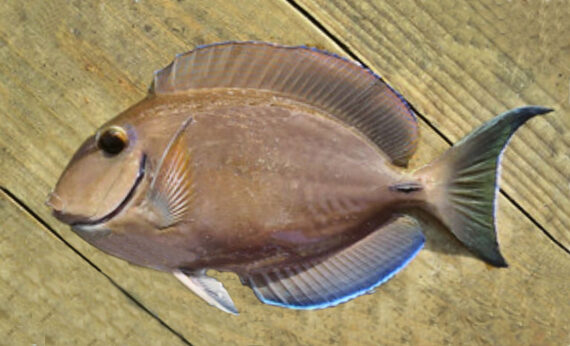 Ocean Surgeonfish, Acanthurus tractus. Fish caught from coastal waters off Fort Lauderdale, Florida, October 2013. Length: 13 cm (5.1 inches). Catch, photograph and identification courtesy of Eli (obsessiveangling.wordpress.com).
Ocean Surgeonfish, Acanthurus tractus. Fish caught from coastal waters off Fort Lauderdale, Florida, October 2013. Length: 13 cm (5.1 inches). Catch, photograph and identification courtesy of Eli (obsessiveangling.wordpress.com).
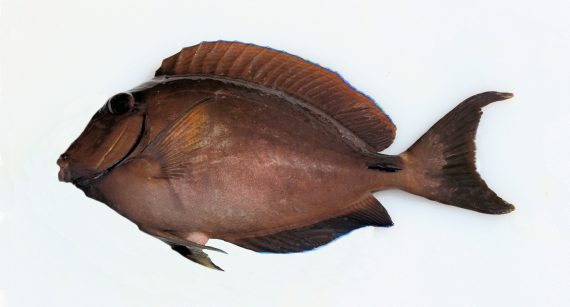 Ocean Surgeonfish, Acanthurus tractus. Fish caught from coastal waters off Key West, Florida, March 2017. Length: 28 cm (11 inches). Catch, photograph, and identification courtesy of Dean Kimberly, Atlanta, Georgia.
Ocean Surgeonfish, Acanthurus tractus. Fish caught from coastal waters off Key West, Florida, March 2017. Length: 28 cm (11 inches). Catch, photograph, and identification courtesy of Dean Kimberly, Atlanta, Georgia.
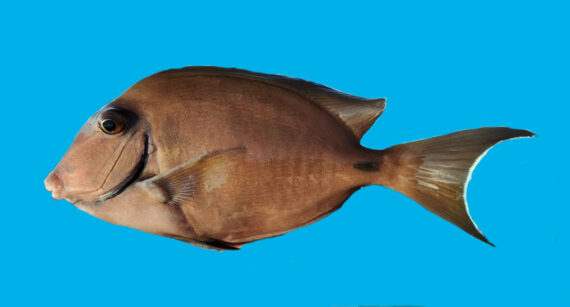 Atlantic Cutlassfish, Trichiurus lepturus. Fish caught from coastal waters off Key Largo, Florida, December 2020. Length: 28 cm (11 inches). Catch, photograph, and identification courtesy of Josh Leisen (joshadventures.com), Gaylord, Michigan.
Atlantic Cutlassfish, Trichiurus lepturus. Fish caught from coastal waters off Key Largo, Florida, December 2020. Length: 28 cm (11 inches). Catch, photograph, and identification courtesy of Josh Leisen (joshadventures.com), Gaylord, Michigan.
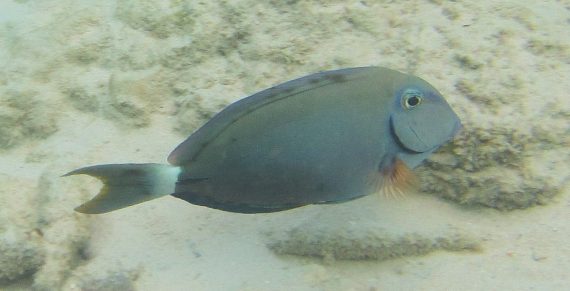 Ocean Surgeonfish, Acanthurus tractus. Underwater photograph taken in coastal waters of Bonaire in December 2019. Photograph courtesy of Bob Hillis, Ivins, Utah.
Ocean Surgeonfish, Acanthurus tractus. Underwater photograph taken in coastal waters of Bonaire in December 2019. Photograph courtesy of Bob Hillis, Ivins, Utah.
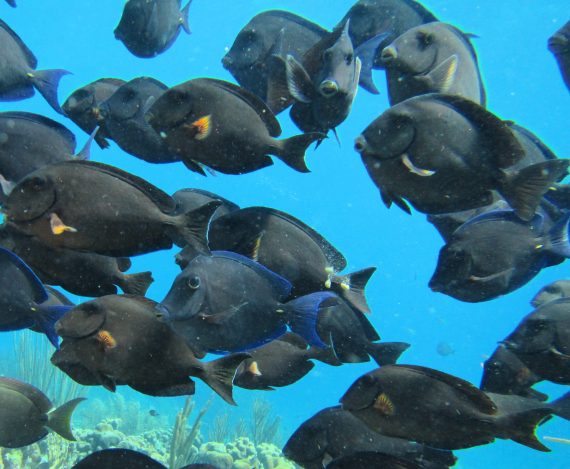 Ocean Surgeonfish, Acanthurus tractus, Mixed In With and Mimicking a School of Blue Tang, Acanthurus coeruleus. Underwater photograph taken in coastal waters of Bonaire in December 2019. Photograph courtesy of Bob Hillis, Ivins, Utah.
Ocean Surgeonfish, Acanthurus tractus, Mixed In With and Mimicking a School of Blue Tang, Acanthurus coeruleus. Underwater photograph taken in coastal waters of Bonaire in December 2019. Photograph courtesy of Bob Hillis, Ivins, Utah.
The Ocean Surgeonfish, Acanthurus tractus, is a member of the Surgeonfish or Acanthuridae Family, that is also known as the Five-band Surgeonfish and in Mexico as cirujano pardo. Globally, there are forty-two species in the genus Acanthurus, of which seven are found in Mexican waters, three in the Atlantic and four in the Pacific Ocean.
The Ocean Surgeonfish have relatively deep, elongated, and highly compressed bodies with a depth that is 43% to 46% of standard length. They vary in color and can be uniformly yellowish to gray brown with short dark lines radiating from the back of their eyes. Their anal and dorsal fins have thin pale margins. In some fish, the caudal fin has a white base. Their pectoral fins are translucent. Males and females are very similar in size and color. They have a steep head profile, a pointed snout, and eyes located high on the head. They have a small and protrusible mouth that is low on the head and has spatulated teeth on both jaws. Their anal fin has 3 spines and 21 to 23 rays; their caudal fin is concave; and, their dorsal fin is continuous with 9 spines and 23 to 26 rays. They have short caudal peduncles with a single razor sharp spine on each side. They have 18 to 24 gill rakers. Their body is covered with tiny, rough, and tightly-spaced scales.
The Ocean Surgeonfish is found around and within shallow and rocky coral reefs and inshore grassy areas at depths up to 55 m (180 feet). They reach a maximum of 39 cm (15 inches) in length. They prefer water temperatures between 24ºC (75ºF) and 26ºC (79ºF). They feed almost exclusively on algae and small amounts of detritus; they are classified as grazers. All developmental stages (eggs, larvae, juveniles, and adults) are preyed upon by larger fish including the newly introduced and highly invasive Red Lionfish, Pterois volitrans. They are active diurnally and can be found as solitary individuals or in small and large mixed-species schools. They are oviparous with annual breeding cycles that include large spawning aggregations numbering up to 20,000 individuals. They are broadcast spawners and release pelagic eggs that are fertilized externally. During spawning, clouds of eggs and sperm are preyed upon by various predatory fish. Eggs develop rapidly and hatch into silvery pelagic larvae. The larvae transition into juveniles within two months. Juveniles settle out within reefs or in tidal pools. As they mature they eventually leave the tidal pools and are found only in reef environments. They have a lifespan of up to thirty-two years.
The Ocean Surgeonfish is a resident of all Mexican waters of the Atlantic Ocean including the Gulf of Mexico and the Caribbean, however, their populations in the western portions of the Gulf of Mexico have significantly diminished.
The Ocean Surgeonfish is most likely confused with the Blue Tang, Acanthurus coeruleus (24 to 26 anal fin rays; 26 to 28 dorsal fin rays; purple-blue adults; yellow juveniles) and the Doctorfish, Acanthurus chirurgus (10 narrow bars on sides; no pale margin on dorsal fin).
From a conservation perspective the Ocean Surgeonfish is currently considered of Least Concern with stable and widely distributed populations. Their population levels are of concern in some locations due to overfishing and loss of coral reef areas and habitats. They play an important ecological role consuming algae that would otherwise kill coral reefs. The Ocean Surgeonfish are not a significant food fish due to their difficulties with handling and known contamination by ciguatoxin. In certain regions of the Caribbean they are targeted and retained by subsistence fishermen, typically utilizing traps and gill nets or occasionally using spears. They are not popular in the aquarium trade.
A word of caution. The spines at the tail base of this fish provide a unique defense mechanism and can inflict major slashing wounds, rendering them dangerous to handle.